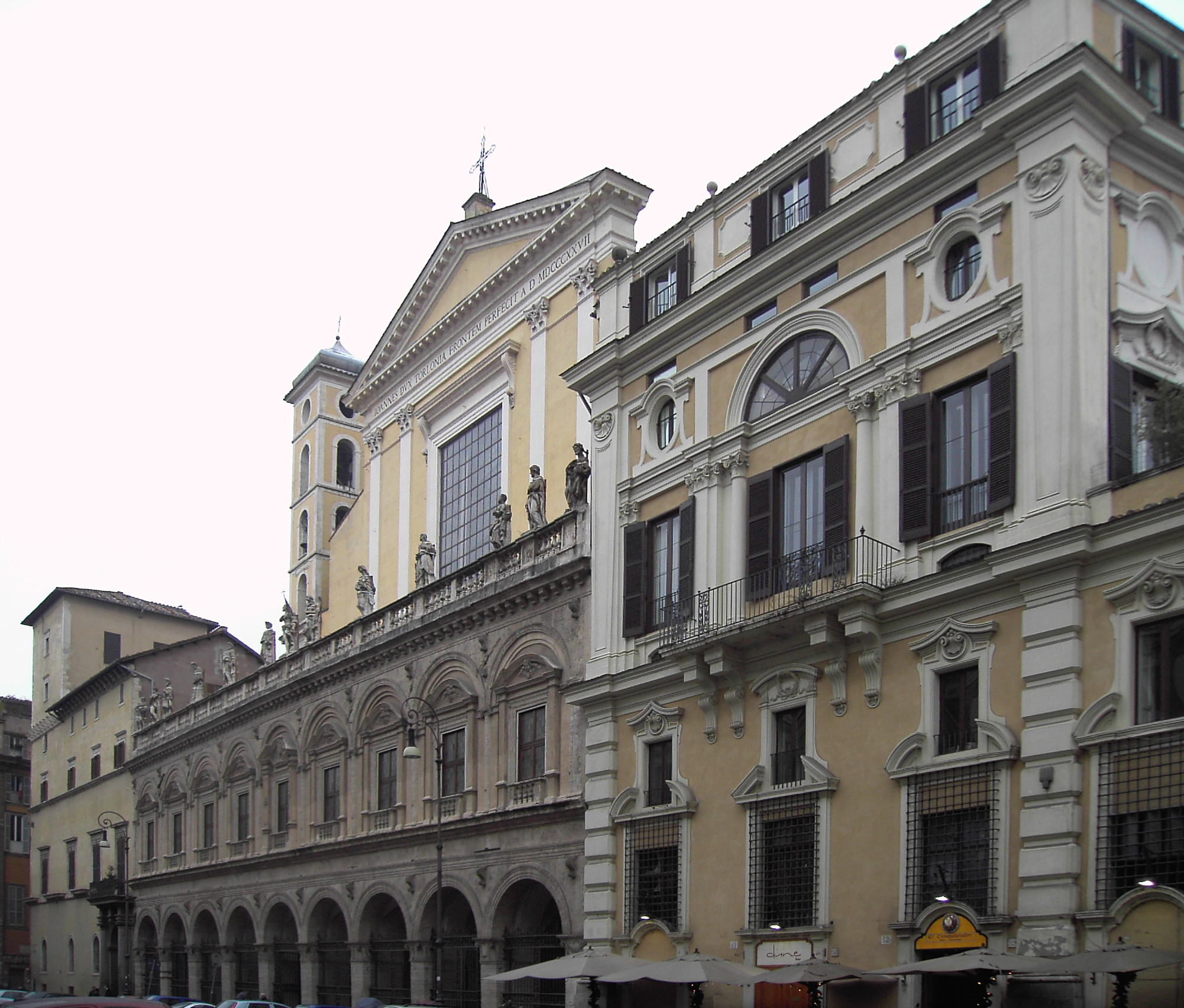


An authentic jewel of the Roman Baroque, the Colonna Gallery was commissioned in the mid-1600s by Cardinal Girolamo I Colonna and his nephew Lorenzo Onofrio Colonna.

It was inaugurated by the son of Lorenzo Onofrio, Philip II, in the year 1700.

The original project is by the architect Antonio del Grande; it was then integrated, in the last decades of the 1600s, by Gian Lorenzo Bernini, Johan Paul Schor and Carlo Fontana.
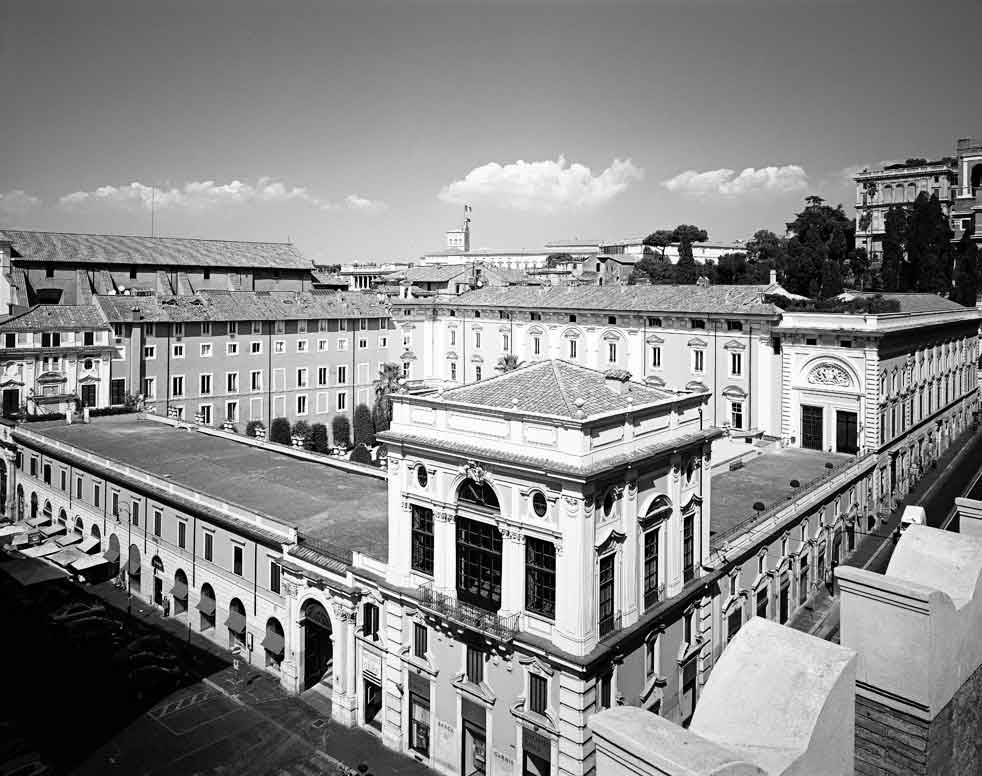
An authentic jewel of the Roman Baroque, the Colonna Gallery was commissioned in the mid-1600s by Cardinal Girolamo I Colonna and his nephew Lorenzo Onofrio Colonna. It was inaugurated by the son of Lorenzo Onofrio, Philip II, in the year 1700. The original project is by the architect Antonio del Grande; it was then integrated, in the last decades of the 1600s, by Gian Lorenzo Bernini, Johan Paul Schor and Carlo Fontana.
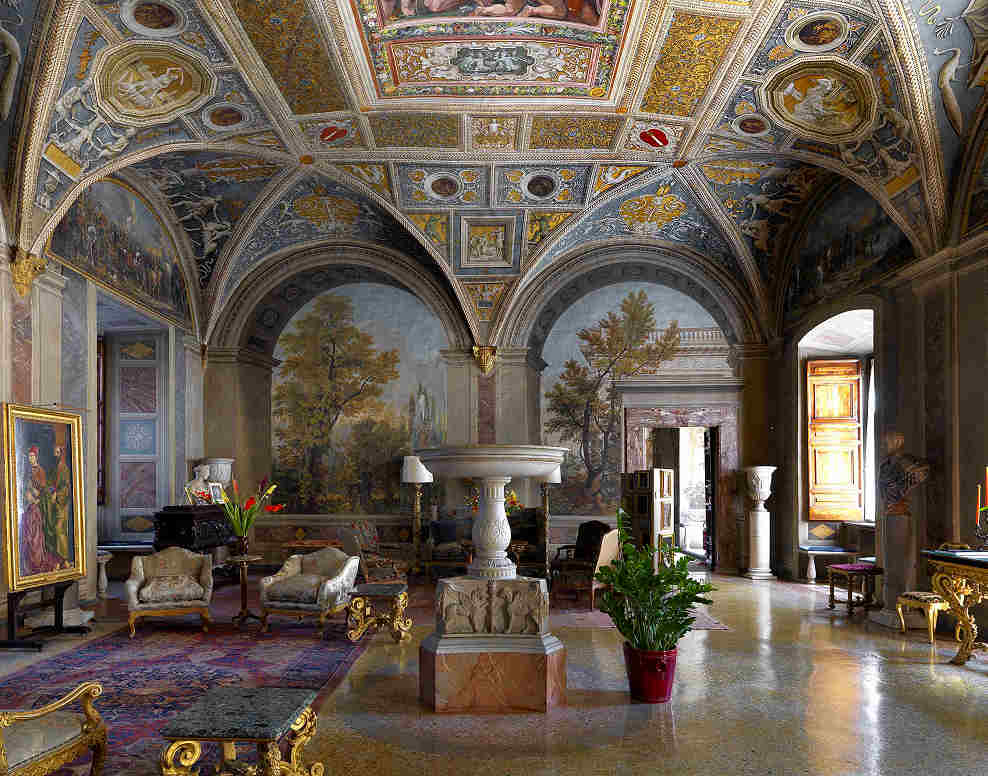
From the very beginning, the Gallery was conceived as a large representative room to worthily celebrate the victory of the Christian fleet over the Turks at the battle of Lepanto in 1571. The commander of the papal fleet, Marcantonio II Colonna, is depicted at various times throughout the vault of the Great Hall of the Gallery and in the Hall of the War Column.
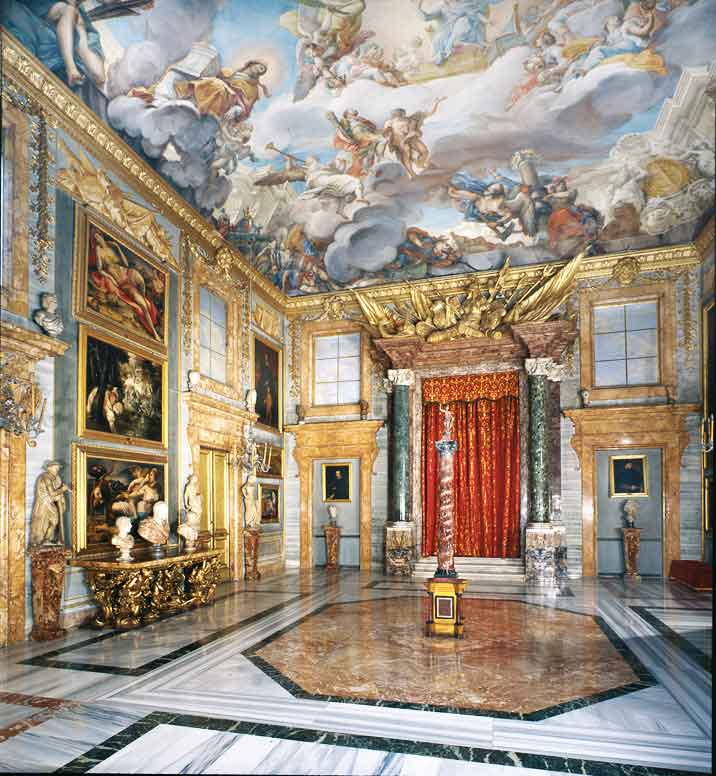
The fresco on the vault above the Sala della Colonna Bellica is by Giuseppe Chiari and depicts Marcantonio's presentation to the Virgin in heaven. The room takes its name from the red marble column placed on a pedestal in the center of the room, which recalls the family coat of arms. The related inlays illustrate scenes from the life of ancient Rome. Among the many artistic masterpieces present in the Sala della Colonna Bellica, we point out the splendid painting by Bronzino depicting Venus, Cupid and Satyr. Of significant interest are also the three large paintings by Michele di Ridolfo del Ghirlandaio depicting The Night, above Bronzino, and, on the opposite wall, Aurora, and Venus and Cupid.
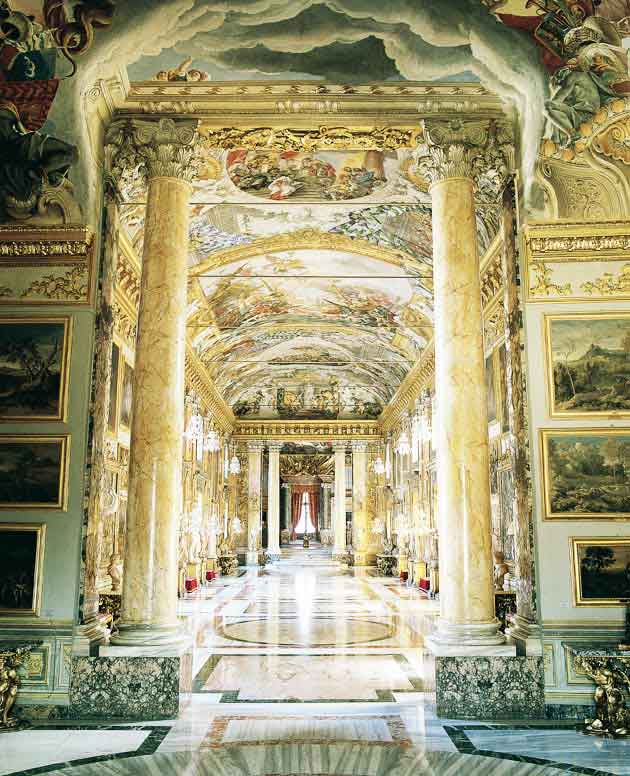
Proceeding in the visit of the Great Hall, we point out the four large mirrors painted by Mario dei Fiori, Giovanni Stanchi and Carlo Maratta, and the imposing succession of pictorial masterpieces by Guercino, Salvator Rosa, Jacopo Tintoretto, Francesco Salviati, Guido Reni, Giovanni Lanfranco and many others. We advise you to stay and walk freely in this splendid room among paintings, sculptures and other precious furnishings, which represent the heart of the family's artistic collections, bound by the fidecommesso since the nineteenth century, which makes them inextricably linked to the walls of the Palace, inalienable and indivisible, which represents the best guarantee for their conservation over time.
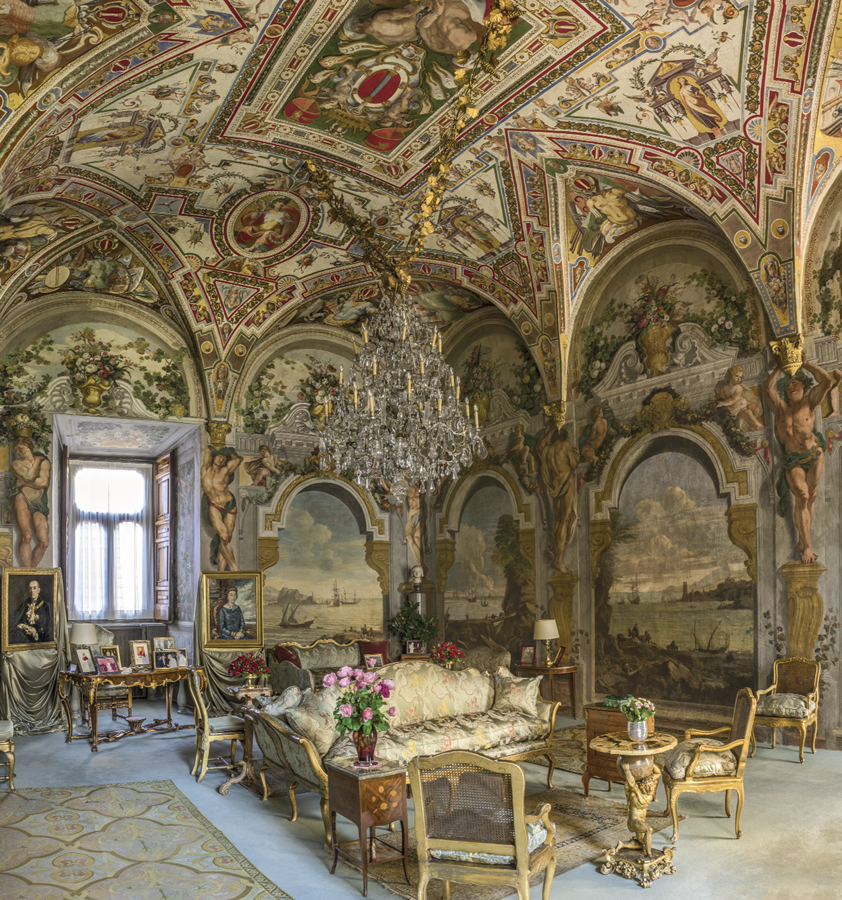
If you are interested in more information on the Colonna family, the Palazzo and its furnishings, we also invite you to freely consult the publications available to the public in the four dedicated points, which are located in the entrance halls, Azzurra, Colonna Bellica and Paesaggi.
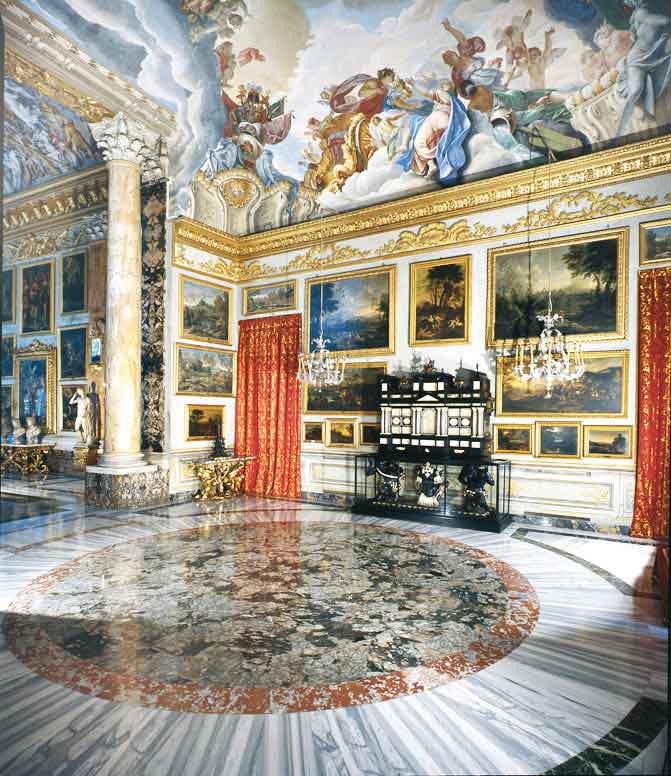
After passing the two majestic columns covered in yellow Siena marble, you find yourself in the Sala dei Paesaggi, so-called for the numerous paintings with a rural subject, the work of Gaspard Dughet. The vault, depicting an Allegory of the Battle of Lepanto, was painted at the end of the 1600s by Sebastiano Ricci. The large ebony and ivory casket, the work of the German Steinhart brothers, depicts scenes from the Old and New Testaments and, in the central part, reproduces the Last Judgment painted by Michelangelo in the Sistine Chapel in the Vatican. On the opposite wall there is a sandalwood and semiprecious stone casket depicting a Roman villa of the time. It should be noted that all the consoles of the Gallery, including the two aforementioned caskets, are supported by submissive figures, representing the Turks won at the Battle of Lepanto.
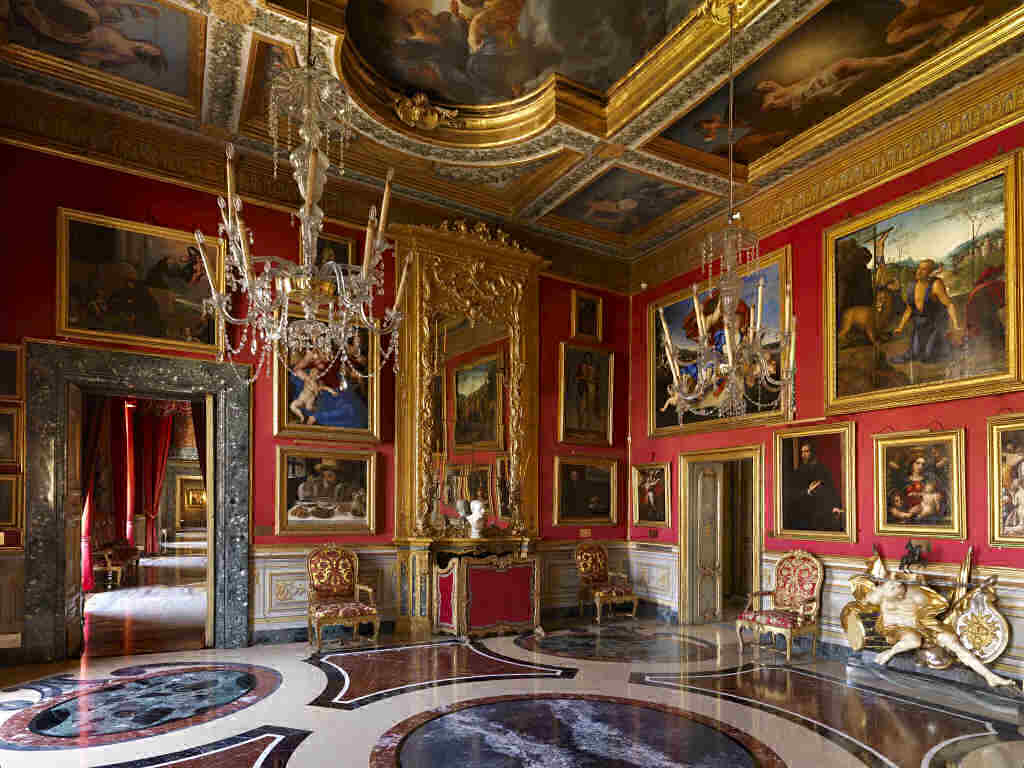
Proceeding with the visit, you arrive in the Hall of the Apotheosis of Martin V, which takes its name from the large canvas by Benedetto Luti placed in the center of the ceiling, depicting the presentation in heaven of the family Pope. This room is full of important masterpieces: Annibale Carracci's Bean Eater is one of the most famous and represents the meal of a 16th century peasant. It has certainly inspired, after three centuries, Impressionist painters such as Van Gogh and Degas. Above the Mangiafagioli there is a valuable table by Bronzino, depicting the Madonna with the sleeping Child, S. Anna and S. Giovannino. To the right of the fireplace, above the painting by Perin del Vaga depicting St. Julian the host and, below, the Portrait of the composer Adrian Willaert at the spinet by Jacopo Tintoretto. On the central wall, Time Captures the Beauty of Cavalier d'Arpino, The Rape of Europe by Francesco Albani, Penitent Saint Jerome in the Perugino Desert and the Holy Family with Saint Sebastian, Saint Jerome and the Magdalene by Paris Bordone. And again, the Crowned Madonna by Andrea del Sarto, the Self-portrait with a cameo and the Resurrection of Lazarus by Francesco Salviati.
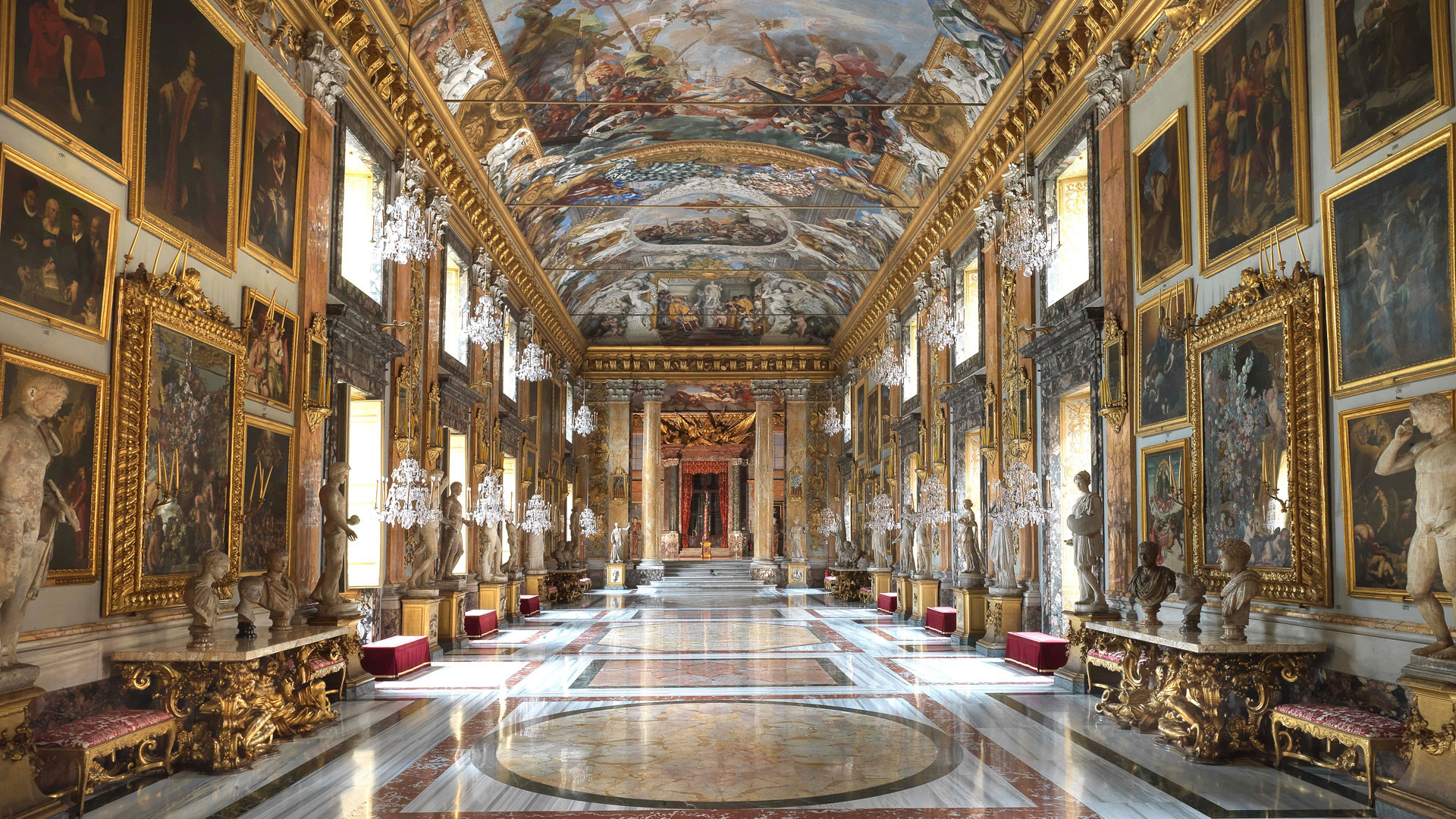
In the center of the access wall to the room, above the seventeenth-century Roman consul, a Carrara marble bust of Cardinal Girolamo I Colonna, client of the Gallery, executed by Orfeo Boselli in the mid-1600s. On the left, a valuable painting by Jacopo Tintoretto , depicting Onofrio Panvinio, a well-known Augustinian historian in his time; on the right, Il Gentiluomo by Paolo Veronese.
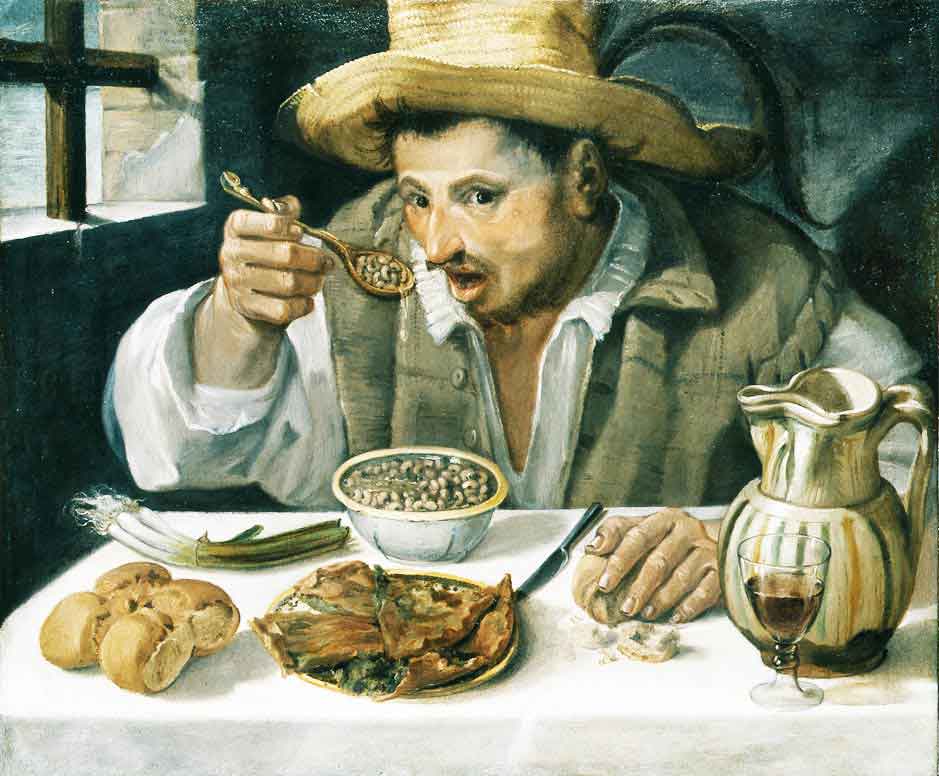
Moving on to the next room, we find ourselves in the Throne Room, still dedicated to the family Pope, Oddone Colonna, elected Supreme Pontiff on 11 November 1417 on the feast of San Martino, and who for this reason chose the name of Martino V. Durante his pontificate, which lasted until 1431, Pope Martin V resided permanently in Palazzo Colonna, which was therefore the Papal See for about ten years. The throne facing the papal portrait was reserved for visits by the Popes, who until 1870 used to visit the palaces of the ancient families of the Roman patriciate from time to time. On the sides of the portrait of Martin V there are two small portraits depicting Marcantonio II Colonna, triumphant in Lepanto, and his wife Felice Orsini, by Scipione Pulzone; on the same wall there are also the two oldest paintings in the collection, the Madonna with Angels by Stefano da Verona, from the fourteenth century, and the Crucifixion by Jacopo Avanzi, also from the 1300s.
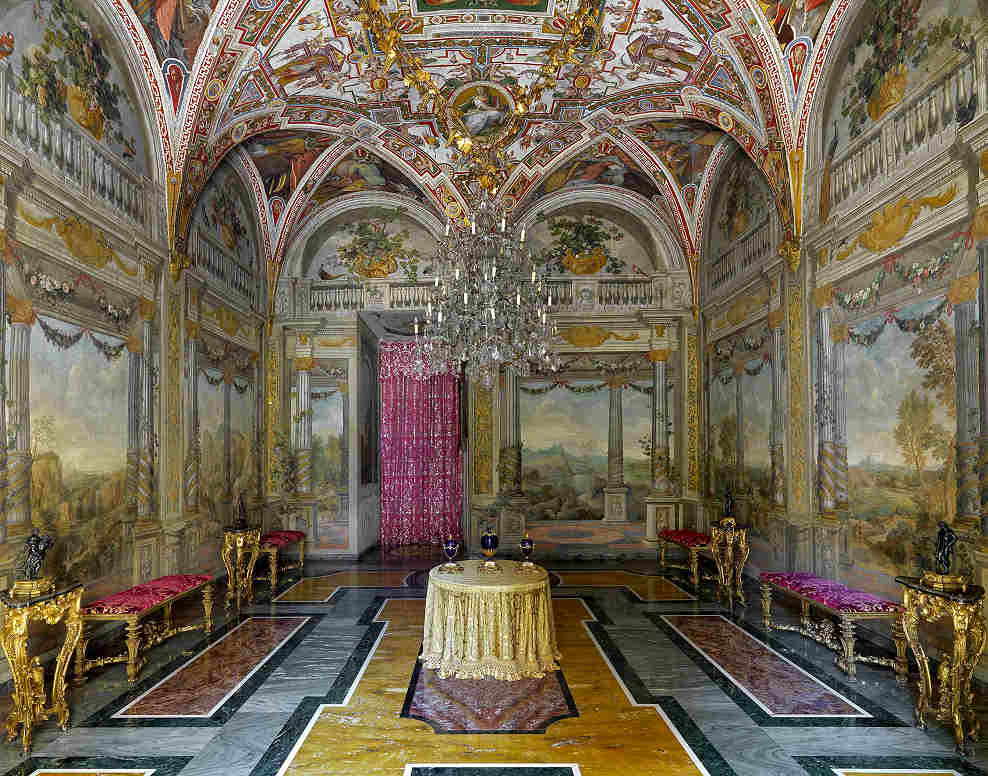
The next Embroidery Room takes its name from the fine "Indian" tapestries from the mid-seventeenth century, which adorn the walls, woven with the gold and silk thread technique. The central canopy shows the Colonna and Pamphilj coats of arms, for the marriage of Philip II Colonna, son of Lorenzo Onofrio Colonna and Maria Mancini Mazzarino, with Olimpia Pamphilj, which took place in 1697.

From the Sala dei Ricami you enter a small vestibule with mirrors, frescoed in the mid-eighteenth century, which takes us back to the Hall of the Apotheosis of Martin V.
Colonna Palace - Colonna Gallery - Museum and Picture Gallery
Address: Via della Pilotta, 17, 00187
Phone: 066784350
Site:
https://www.galleriacolonna.it/Location inserted by
CHO.earth